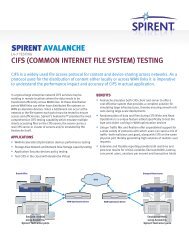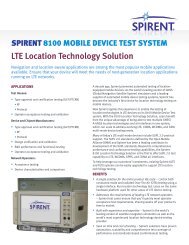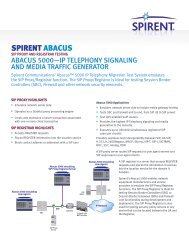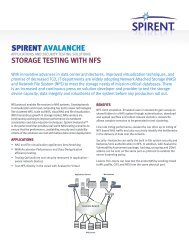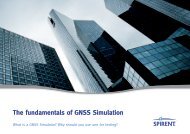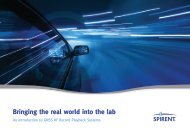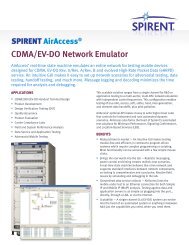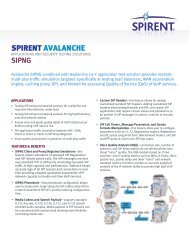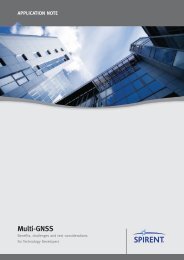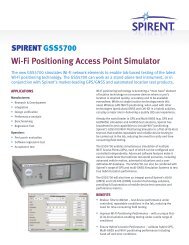The risks and limitations of GNSS live sky testing within a production ...
The risks and limitations of GNSS live sky testing within a production ...
The risks and limitations of GNSS live sky testing within a production ...
Create successful ePaper yourself
Turn your PDF publications into a flip-book with our unique Google optimized e-Paper software.
Supplying the stimulus<br />
When integrating <strong>GNSS</strong> tests with other acceptance tests, the first<br />
(<strong>and</strong> rather obvious) problem is that the test area is not exactly<br />
a <strong>GNSS</strong> friendly environment. <strong>The</strong> ro<strong>of</strong> <strong>of</strong> the <strong>production</strong> area will<br />
almost certainly block the ingress <strong>of</strong> signals from any <strong>GNSS</strong> system,<br />
<strong>and</strong> there will inevitably be a great number <strong>of</strong> interfering RF signals<br />
being reflected around the test area.<br />
<strong>The</strong> first <strong>of</strong> these problems is relatively easy to solve: the <strong>GNSS</strong><br />
signals can be “captured” by an outdoor receiver <strong>and</strong> relayed to the<br />
test area. However, while relaying “<strong>live</strong>-<strong>sky</strong>” signals might seem to<br />
<strong>of</strong>fer a cost-effective solution for <strong>production</strong> <strong>testing</strong> <strong>of</strong> <strong>GNSS</strong>-enabled<br />
equipment, it does have many significant <strong>limitations</strong>.<br />
SPIRENT eBook<br />
Page 7




